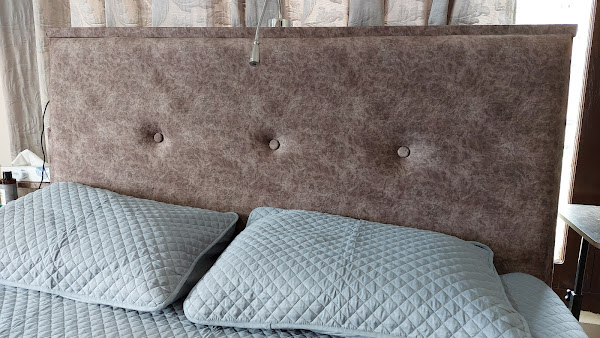You don't need a floating bed to have a good night's sleep, but if you must, please invest in a good mattress instead because that has a considerable effect on the quality of your sleep and, therefore, the quality of your life. I don't have to dig into the science to prove how good sleep influences a good life.
If it's the mattress that matters, why did I work on a bed? A floating bed, rather? At first, I was into making a headboard for my old bed. I spent a long time reading and writing in my bed, and it was painful not to have a soft and sturdy headboard to lean on.
I worked on a headboard that I always wanted to have. I had a mental picture of one. The ones I saw in the market were not within the budget I could afford and not quite the kind I wanted. My Headboard came out better than I thought. I went beyond wood and carpentry into foam and cloth. I didn't stop there.
Why did I even want a headboard in the first place? I wanted to read and write in my bed; that's when I felt the need to have a reading light attached. Now that I have an electrical item attached, I thought, why not add another feature to make life easy; I added a mobile charging station on both ends of the board for my wife and me. No more messy extension cords and chargers on the bedside table at night.
Initially, it was a standard two-pin plug, but a friend suggested I have a USB charger and remove the need for an external charger. Likewise, I had a reading light that had a small switch that was difficult to locate, especially when I was sleepy and trying to turn off the light; therefore, the same friend suggested I go for a light that would turn on and off by mere touch on any part- and no switch.









